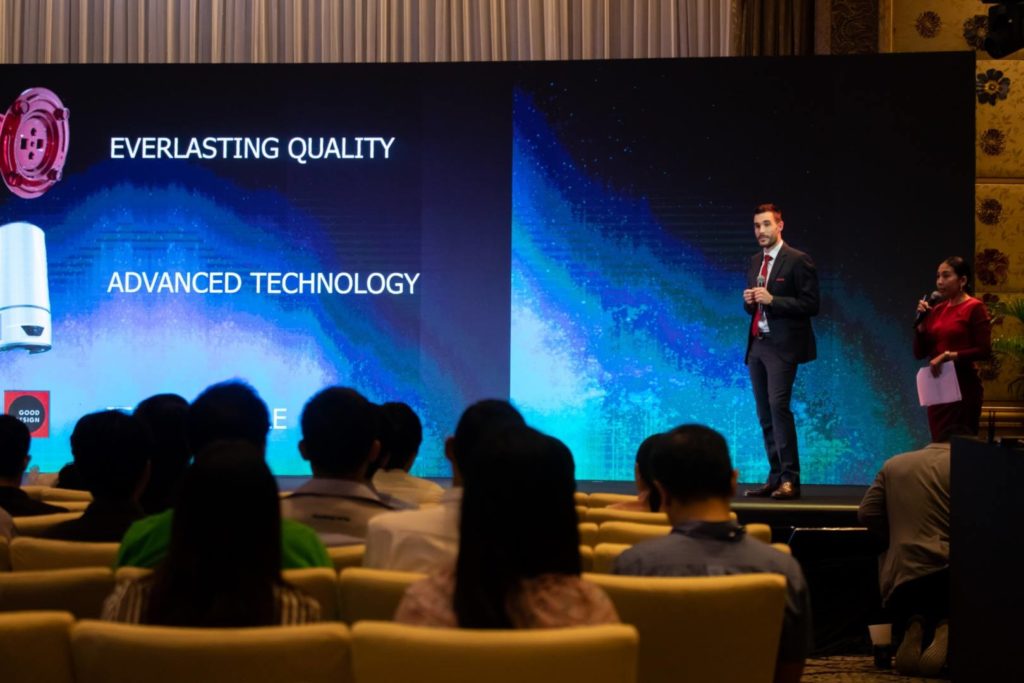บริษัท มาซูม่า (ประเทศไทย) จำกัด จัดงาน “Exclusive Dinner เปิดตัวแบรนด์ ARISTON”

เมื่อวันที่ 8 พฤศจิกายน 2562 ที่ผ่านมา บริษัท มาซูม่า (ประเทศไทย) จำกัด นำโดย คุณศรัล ดุรงค์เดช กรรมการผู้จัดการ และคุณอรชุมา ดุรงค์เดช รองกรรมการผู้จัดการ ได้จัดงาน “Exclusive Dinner เปิดตัวแบรนด์ ARISTON” ที่สุดของเครื่องทำน้ำอุ่น และเครื่องทำน้ำร้อน แบรนด์อันดับ 1 ของยุโรปนำเข้าจากประเทศอิตาลี ที่ปลอดภัย และประหยัดพลังงาน พร้อมดีไซน์หรูฉีกทุกข้อกำจัดของเครื่องทำน้ำอุ่นแบบเดิมๆ ออกแบบโดยดีไซเนอร์ผู้ออกแบบรถแลมโบกินี

โดยบริษัท อริสตัน เธอร์โม จำกัด ได้ให้เกียรติแต่งตั้ง บริษัท มาซูม่า (ประเทศไทย) จำกัด เป็นผู้จัดจำหน่ายแต่เพียงผู้เดียวในประเทศไทย เนื่องจากเล็งเห็นถึงศักยภาพในฐานะบริษัทที่มีความชำนาญในสินค้าที่เกี่ยวกับน้ำ บวกกับประสบการณ์ที่มีในตลาดไทยมาตลอดระยะเวลากว่า 30 ปี รวมถึงมีช่องทางการจัดจำหน่ายที่กระจายอยู่ครอบคลุมทั่วประเทศ พร้อมทั้งศูนย์บริการของมาซูม่า 15 แห่ง ที่สามารถดูแลหลังการขายให้กับลูกค้าได้เป็นอย่างดี และถือเป็นอีกก้าวสำคัญในการเติบโตของทั้งบริษัท มาซูม่า (ประเทศไทย) จำกัด และ อริสตัน เธอร์โม กรุ๊ปในเอเชียแปซิฟิกเช่นกัน โดยเราเชื่อว่าด้วยจุดแข็ง 3 ข้อ คือ คุณค่าที่เรามอบให้กับลูกค้า คุณภาพ และความยั่งยืน จะเป็นแต้มต่อสำคัญที่ทำให้อริสตันและบริษัท มาซูม่า (ประเทศไทย) จำกัด เติบโตในตลาดไทยต่อไป













